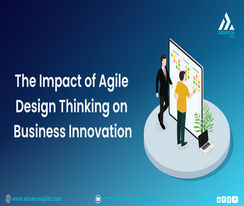In a rapidly evolving business landscape, organizations are constantly searching for new ways to stay ahead of the curve. Traditional methods of product development and innovation no longer suffice in an age where customer needs change overnight and market dynamics shift rapidly. Enter Agile Design Thinking—a powerful combination that is revolutionizing how businesses innovate. By merging the flexibility of Agile methodologies with the customer-centric principles of Design Thinking, companies are unlocking new levels of creativity, efficiency, and impact.
Understanding Agile and Design Thinking
Before diving into their synergy, it's essential to understand the foundational principles of both Agile and Design Thinking.
Agile is a mindset and framework originally rooted in software development, aimed at delivering value quickly through iterative development, continuous feedback, and adaptability. Its focus is on collaboration, speed, and responding to change.
Design Thinking, on the other hand, is a human-centered approach to innovation. It involves empathizing with users, defining their problems, ideating solutions, prototyping, and testing. This iterative process ensures that the end product aligns with real user needs.
Together, Agile Design Thinking for business innovation merges the best of both worlds: the user-centric approach of Design Thinking with the executional agility of Agile.
How Agile Drives Innovation in Business
Agile practices, such as Scrum or SAFe, help teams respond swiftly to changing customer demands. In the context of innovation, Agile promotes:
• Frequent delivery of value
• Cross-functional team collaboration
• Short feedback loops
• Continuous improvement
These features allow businesses to test new ideas quickly and pivot based on real-world data rather than assumptions.
Consider a telecom company launching a new digital product. Using Agile principles, they can break the product into small, testable features. After releasing a minimum viable product (MVP), they gather customer feedback and refine the offering. This cycle promotes customer-centric innovation with Agile, reducing risk and accelerating time-to-market.
Design Thinking in Agile Product Development
When integrated into Agile product development, Design Thinking enhances the process by grounding each iteration in empathy and user needs. Teams begin by understanding user pain points and motivations through interviews, observation, and research.
Here’s how Design Thinking complements Agile in product development:
• Empathy → Informs user stories and backlogs
• Problem definition → Guides sprint goals
• Ideation → Fuels backlog refinement and feature design
• Prototyping & Testing → Fits into sprint cycles and reviews
By embedding Design Thinking early in Agile workflows, organizations create more meaningful and impactful products. This process is particularly useful in digital environments, making Design Thinking for digital transformation a strategic advantage.
Business Innovation Using the Agile Mindset
Business innovation using the Agile mindset extends beyond product development. It changes how teams think, act, and make decisions. An Agile mindset encourages:
• Embracing failure as learning
• Encouraging experimentation
• Empowering cross-functional teams
• Adapting strategies based on feedback
This mindset can be applied to operations, marketing, customer service, and even HR. For example, a retail company might use Agile to quickly test new customer engagement models, optimize in-store experiences, or personalize online shopping.
Companies like Amazon and Spotify are prime examples of how an Agile mindset fuels business innovation. They consistently experiment, learn, and evolve—keeping customer needs at the core while adapting to the market with agility.
Benefits of Agile and Design Thinking
The integration of Agile and Design Thinking benefits businesses in several impactful ways:
1. Customer-Centricity
Design Thinking ensures that all development efforts begin with a deep understanding of the customer. Agile ensures that this insight is acted upon quickly and efficiently.
2. Faster Time-to-Market
Combining Agile sprints with rapid prototyping from Design Thinking shortens the product development lifecycle, enabling faster launches.
3. Increased Collaboration
Cross-functional teams from both frameworks promote better communication and alignment across departments, breaking down traditional silos.
4. Higher Product Success Rate
Products developed with a user-centric, iterative approach are more likely to meet customer expectations and succeed in the market.
5. Enhanced Innovation Culture
An environment that encourages testing, failing fast, and learning fosters continuous innovation and resilience.
Customer-Centric Innovation with Agile
The heart of modern innovation lies in understanding and solving real customer problems. Agile enhances this by allowing businesses to test hypotheses quickly and refine their products with continuous feedback.
Here’s a quick example:
A banking institution wants to create a new mobile app feature for savings management. Using Design Thinking, they first conduct interviews to understand what savings behaviors users struggle with. The insights guide them to prototype a personalized savings coach. Using Agile, they develop and test this feature over multiple sprints, iterating based on user feedback after each release.
This is customer-centric innovation with Agile—real problems, real solutions, delivered rapidly.
Design Thinking for Digital Transformation
Design Thinking for digital transformation is becoming increasingly vital as businesses digitize customer experiences, internal processes, and value chains.
Digital transformation is not just about adopting technology—it’s about reimagining how a company delivers value. Design Thinking ensures that the human experience remains central during this transformation. Agile enables continuous adaptation as technology and customer expectations evolve.
For instance, a logistics company might use Design Thinking to map a customer’s delivery experience and identify friction points. Then, through Agile development, they build digital tools—like real-time tracking, AI-assisted routing, or chatbot support—that are directly aligned with user pain points and expectations.
This approach ensures that digital transformation is not only tech-driven but also deeply aligned with user needs, maximizing ROI.
Final Thoughts
In today’s complex, fast-moving business world, organizations can no longer rely on static planning or outdated development models. The fusion of Agile and Design Thinking is not a luxury—it’s a necessity for sustained innovation and customer relevance.
By embracing Agile Design Thinking for business innovation, companies position themselves to:
• Understand and anticipate customer needs
• Deliver valuable solutions rapidly
• Continuously adapt and evolve
• Foster a culture of creativity, collaboration, and improvement
Whether you're a startup aiming to disrupt an industry or an enterprise undergoing transformation, blending Agile and Design Thinking will give you the mindset, tools, and agility to innovate with purpose—and thrive in the digital age.
view Count
49



